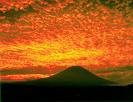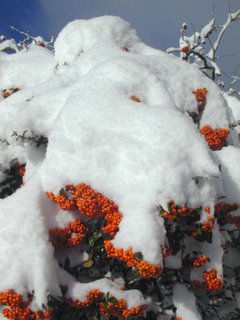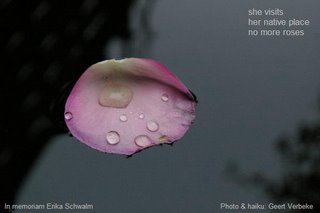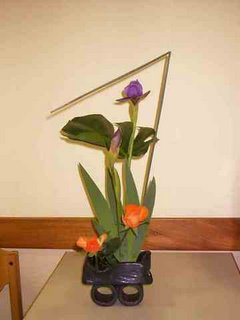:::::::::::::::::::::::::::::::::::::::::::::::::::::::::::::::::::::::::::::::::::::::::::::::::::::
Mistletoe (Viscaceae)
***** Location: USA, other countries
***** Season: All Winter
***** Category: Plant
*****************************
Explanation
Mistletoe is the common name for various evergreen parasitic plants of the families Loranthaceae andViscaceae, especially "European Mistletoe" Viscum album and "American Mistletoe" Phoradendron flavescens, with waxy white berries and smooth-edged oval leaves in pairs along the woody stem.
http://www.mistletoe.org.uk/mtoenewweb2003/InArtChristmas2003.htm
xxxxxxxxxxxxxxxxxxxxxxxxxxxxxxxxxx
Martha Brockenbrough on the plant:
Mistletoe is an interesting plant. It's a parasite; in fact it's the only plant that is actually considered a true parasite because it sometimes kills the hardwood trees it infests. Mistletoe grows slowly in trees, and doesn't put roots in the ground.
This liberation from the earth made the ancient Druids believe mistletoe was sacred. It was even considered bad luck to let any mistletoe touch the ground.
The tradition of kissing under the mistletoe probably got its start with the Druids as well.
According to one explanation, the Norse god Balder was killed with an arrow made of mistletoe. The rest of the gods were sad, so they decided to bring him back to life. The Goddess of Love then dedicated the mistletoe to Balder--and anyone passing under it must receive a kiss to show tribute to this symbol of love.
Others point to the Druid tradition of laying down arms and exchanging greetings under the mistletoe as the origin of the kissing tradition. They credit the English for taking peace one step further by puckering up, then plucking a berry from the bunch and discarding it. The kissing ended when the berries ran out, inspiring people to find hearty bunches.
http://encarta.msn.com/encnet/features/columns/?article=questionmistletoe
xxxxxxxxxxxxxxxxxxxxxxxxxxxx
National Geographic News
Harvesting Mistletoe: Gunfire Gets The Job Done
by Steven Ginsberg
Plucking, Climbing, Shooting
Here's the ugly truth: Mistletoe digs through tree bark to suck out sap, leeching water and nutrients from its host. Sometimes it kills its host. Hunters have been known to shoot it to save a tree.
The mistletoe Americans are familiar with, Phoradendron serotinum, grows primarily in the Southeast and as far west as Texas and Oklahoma.
In swamps, it can be plucked off low-hanging branches by hand. Elsewhere, it can sometimes be taken by ladder or by climbing a tree.
As mistletoe's popularity surged, it gave rise to commercial growers. But many farmers markets, roadside stands, and nurseries still rely on the old-fashioned method of shooting it down.
Blowing it out of the sky is "the West Virginia way," said Charlie Spencer, a state forestry specialist who's hunted mistletoe for years.
"A shotgun is just the most effective way to get it out."
http://news.nationalgeographic.com/news/2001/12/1219_mistletoe.html
xxxxxxxxxxxxxxxxxxxxxxxxxxxxx
The mistletoe is a common decoration.
Here is a link to Art Nouveau with some great pieces.
http://www.mistletoe.org.uk/mtoenewweb2003/InArtNouveau2003.htm
Check out more on Art on the link above.
*****************************
Worldwide use
Italy
In Italy a special plant for the New Year is the mistletoe. It is considered a plant of good omen. The holly is typical for Christmas time together with the poinsettia.
kiss under the
mistletoe, as long
as the year
Moussia from a frozen Roma, 2006
:::::::::::::::::::::::::::::::::::::::::::::::::::::::::::::::::::::::::::::::::::::::::::::::::::::
North America
In the US, it is a traditional Christmas decoration, while in Europe, it is used to celebrate the New Year.
In Scandinavia, it is a symbol of peace.
Sarah
*****************************
Things found on the way
The Pickwick Papers, Charles Dickens
"From the centre of the ceiling of this kitchen, old Wardle had just suspended with his own hands a huge branch of mistletoe, and this same branch of mistletoe instantaneously gave rise to a scene of general and most delightful struggling and confusion; in the midst of which, Mr. Pickwick, with a gallantry that would have done honour to a descendant of Lady Tollimglower herself, took the old lady by the hand, led her beneath the mystic branch, and saluted her in all courtesy and decorum."
http://www.candlegrove.com/mistletoe.html
xxxxxxxxxxxxxxxxxxxxxxxxxxxx
I Saw Mommy Kissing Santa Claus
I saw Mommy kissing Santa Claus
Underneath the mistletoe last night
She didn't see me creep
Down the stairs to have a peep
She thought that I was tucked up in my bedroom fast asleep
Then I saw Mommy kissing Santa Claus
Underneath his beard so snowy white
Oh, what a laugh it would have been
If Daddy had only seen
Mommy kissing Santa Claus last night
http://wilstar.com/xmas/isawmommykissingsantaclaus.htm
xxxxxxxxxxxxxxxxxxxxxxxxxxxx
an article on Australian mistletoe
http://www.forests.qld.gov.au/educat/btl/mistle.htm
legends and stories regarding the mistletoe
http://www.culture.gouv.fr/culture/noel/angl/gui.htm
the celtic origins of mistletoe
Allheal or Golden Bough
In Victorian times, kissing under the Mistletoe was a Christmas ritual that old-timers hoped would lead to romance and marriage among the younger generation. Today, the Mistletoe is familiar to us as a Christmas decoration that results in some innocent mischief at the annual Christmas office party. But in ancient times, the Mistletoe was known by the Celts and the Vikings as a healing plant upon which superstition and myth had bestowed miraculous healing powers.
More about other celtic and viking traditions is here:
Mistletoe
WKD : Mistletoe, Its Celtic Origins
*****************************
HAIKU
Just below
the mistletoe
A kiss
Sarah
xxxxxxxxxxxxxxxxxxxxxxxxxxxxxxxxxxxxxx
on the visor
of his cap
mistletoe
Michael Baribeau
:::::::::::::::::::::::::::::::::::::::::::::::::::::::::::::::::::::::::::::::::::::::::::::::::::::
slowing
the French train passes
trees with mistletoe
Alan Summers
Blithe Spirit Vol. 19 No. 1 (March 2009)
WKD Facebook
*****************************
Related words
***** World Kigo Database: Poinsettia -
***** Fern and other plants for the New Year in Japan
:::::::::::::::::::::::::::::::::::::::::::::::::::::::::::::::::::::::::::::::::::::::::::::::::::::
Back to the Worldkigo Index
http://worldkigodatabase.blogspot.com/
:::::::::::::::::::::::::::::::::::::::::::::::::::::::::::::::::::::::::::::::::::::::::::::::::::::


































